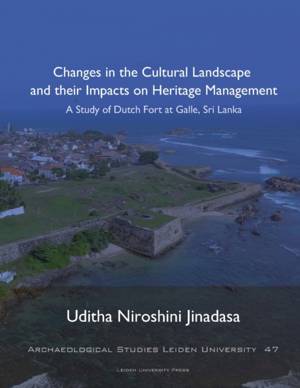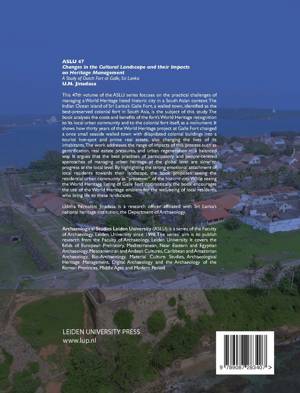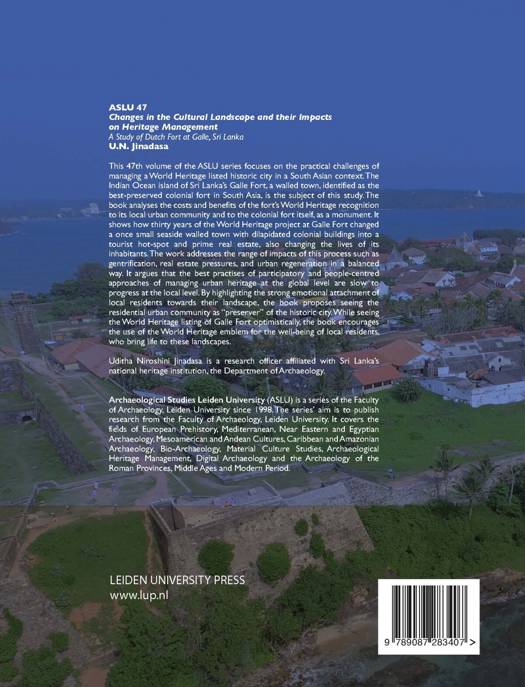
- Afhalen na 1 uur in een winkel met voorraad
- Gratis thuislevering in België vanaf € 30
- Ruim aanbod met 7 miljoen producten
- Afhalen na 1 uur in een winkel met voorraad
- Gratis thuislevering in België vanaf € 30
- Ruim aanbod met 7 miljoen producten
Zoeken


Changes in the Cultural Landscape and Their Impacts on Heritage Management
A Study of Dutch Fort at Galle, Sri Lanka
Uditha Niroshini Jinadasa
€ 66,00
+ 132 punten
Omschrijving
This 47th volume of the ASLU series focuses on the practical challenges of managing a World Heritage listed historic city in a South Asian context. The Indian Ocean island of Sri Lanka's Galle Fort, a walled town, identified as the best-preserved colonial fort in South Asia, is the subject of this study. The book analyses the costs and benefits of the fort's World Heritage recognition to its local urban community and to the colonial fort itself, as a monument. It shows how thirty years of the World Heritage project at Galle Fort changed a once small seaside walled town with dilapidated colonial buildings into a tourist hot-spot and prime real estate, also changing the lives of its inhabitants. The work addresses the range of impacts of this process such as gentrification, real estate pressures, and urban regeneration in a balanced way. It argues that the best practises of participatory and people-centred approaches of managing urban heritage at the global level are slow to progress at the local level. By highlighting the strong emotional attachment of local residents towards their landscape, the book proposes seeing the residential urban community as "preserver" of the historic city. While seeing the World Heritage listing of Galle Fort optimistically, the book encourages the use of the World Heritage emblem for the well-being of local residents, who bring life to these landscapes.
Specificaties
Betrokkenen
- Auteur(s):
- Uitgeverij:
Inhoud
- Aantal bladzijden:
- 380
- Taal:
- Engels
- Reeks:
- Reeksnummer:
- nr. 47
- Geïllustreerd:
- Ja
Eigenschappen
- Productcode (EAN):
- 9789087283407
- Verschijningsdatum:
- 1/08/2020
- Uitvoering:
- Paperback
- Formaat:
- Trade paperback (VS)
- Afmetingen:
- 208 mm x 272 mm
- Gewicht:
- 1202 g

Alleen bij Standaard Boekhandel
+ 132 punten op je klantenkaart van Standaard Boekhandel
Beoordelingen
We publiceren alleen reviews die voldoen aan de voorwaarden voor reviews. Bekijk onze voorwaarden voor reviews.












